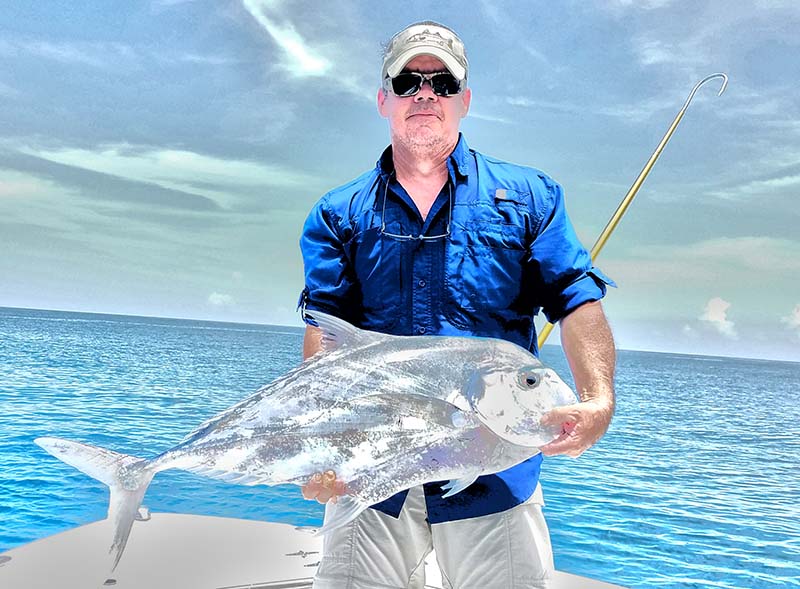
While trolling for pelagic fish will still be producing, it is cobia time! This is the time of year that we could see cold-water upwellings, which will push cold water from the deeper depths closer to shore. With these upwellings, the cobia will move into shallower waters and all the way onto the beaches. Cobia are a great fighting fish and are great to eat as well.
One of the ways to find these fish is to look for structure or reefs in the areas of the cooler water temperatures and then start sight fishing. If the water is clean and clear, have someone with polarized sunglasses stand at the highest safe spot on the boat looking for these fish swimming on the surface. Also watch for sharks or rays, cobia will more than likely be following them or under them. If any of these are seen, cast a bigger jig or a weighted grub in their direction to try to entice any cobia that might be around to eat. If there is a cobia that looks at your jig but won’t eat, have a frisky live bait or a piece of squid to pitch to him and it should be game on. If you haven’t been able to sight fish any cobia around structure, it is always a good idea to try slow trolling or drifting live baits around structure. You can also sight fish cobia the same way off the beaches in as close as 10-to-15 feet depths. It is best to use a longer fishing rod when sight fishing cobia for making longer casts.
Please be familiar with the size limit of cobia—33-inches to the fork of the tail. Always net a smaller fish if legal size is questionable for immediate release. Remember, these are a strong fish and will cause damage if they get away from you. So, if you know the fish is legal, have the fishbox ready to receive the fish and close the lid quickly.
When there is not a cold-water upwelling, the snapper bite should be good. Mutton snapper and mangrove snapper are the big rod benders. These fish will be directly on the bottom around the reefs and structure. These fish will eat most live or dead bait offerings. A good choice will be to drop a live sardine or pilchard to the bottom on one rig and dead bait such as squid, a ballyhoo chunk or a plugged sardine on another rig to see what they prefer. When the bite stops on the bait you are using, switch to a different kind of bait, either dead, cut or live.
Another way to catch these fish is by vertical or butterfly jigging. To effectively do this, and have the best results, you will want a rod with a heavy backbone and a light tip. You can either use a spinning or conventional set-up; whichever you prefer. Spool it with 20-to-30-pound braid for best results. Braid has no stretch and you will feel more hits than with mono-line.
Be sure to know the legal-size requirements and limits as it varies between snapper species. Also, be sure to vent the fish if you are fishing in deeper waters before releasing any non-keepers.
Keep in mind while fishing, if you see any mats of sargassum weed, slowly make your way over to them. With pitch rods ready, cast some live bait toward the edge of the mats and see what comes out. If the mats are in a line along a rip, set out your live baits and slow troll along the edges of the mat. This time of year, you could catch mahi, triple tail or any number of other species.
Be safe and watch the sky for afternoon storms while on the water.
FORECAST BY: Capt. Danny Markowski
LottaBull Fishing Charters
Phone: (772) 370-8329
Email: lottabull4@bellsouth.net
www.lottabullfishingcharters.com




